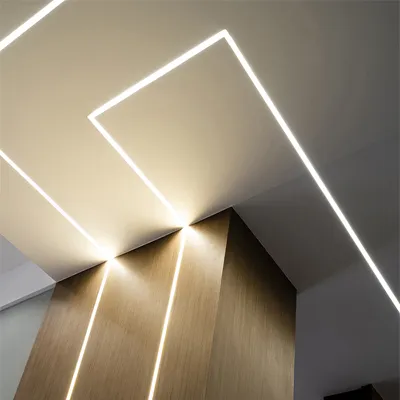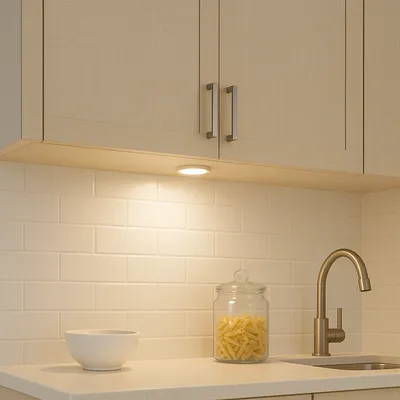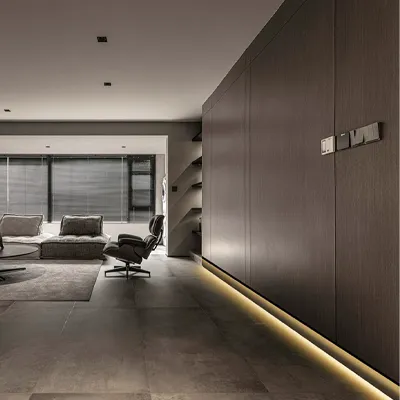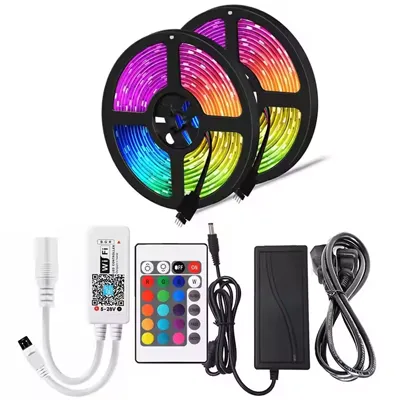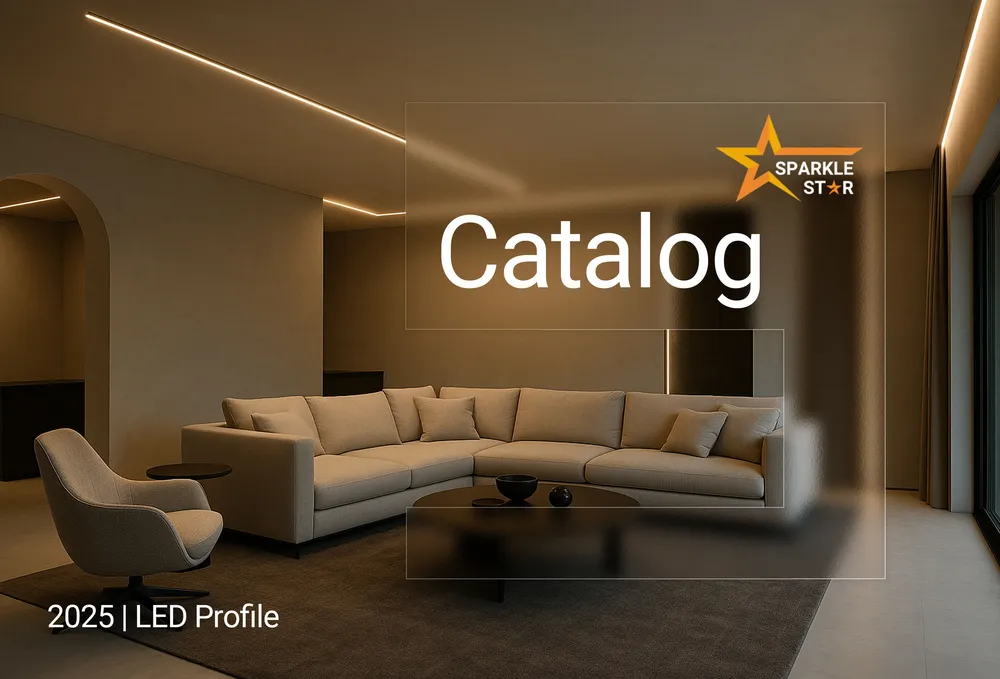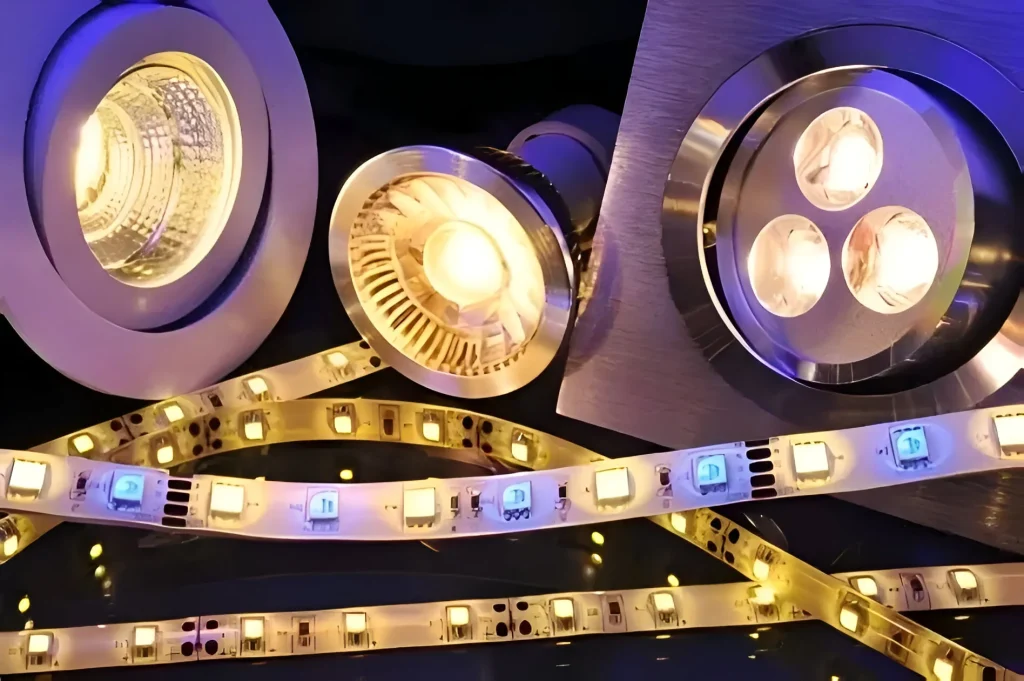
In the world of linear lighting, a common question arises for designers, installers, and enthusiasts alike: what is the real difference in the COB vs. SMD debate? They represent the dominant technologies for flexible LED strips, and while they may seem similar, their underlying structure leads to vastly different performance characteristics and visual outcomes. Next, we'll dive into a direct, in-depth technical comparison to analyze exactly how they differ, helping you select the perfect technology for your specific project.
What is SMD?
What is SMD? SMD stands for "Surface Mounted Device." Think of it as the classic approach to making an LED strip: a series of individual, larger LED chips are mounted onto a flexible circuit board. This construction is why you can often see the distinct "dots" of light that many people associate with LED strips.
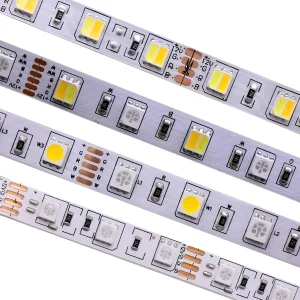
What is COB?
What is COB? COB stands for "Chip on Board." This is a newer technology where, instead of individual chips, hundreds of tiny micro-chips are packed incredibly close together and covered by a single, continuous layer of phosphor. This innovative design allows the light to blend together at the source, creating one seamless, solid line of light.
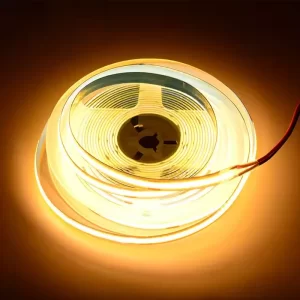
To truly understand which technology fits your needs, we need to break down their performance head-to-head. Let's dive into the key areas where their differences become most apparent.
1. Light Uniformity & Aesthetics
This is, without a doubt, the most significant and immediately noticeable difference between COB and SMD strips. It all comes down to how they produce light.
The classic SMD strip uses individual LED chips spaced apart, resulting in visible "hotspots" or dots of light, especially without heavy diffusion. In contrast, the COB strip's design, with its continuous phosphor layer over hundreds of micro-chips, allows it to produce a completely seamless, uniform line of light, eliminating the "dotted" effect entirely.
Attribute | SMD | COB |
|---|---|---|
Visual Output | Dotted, visible light points | Seamless, continuous line |
Hotspots | Yes, without deep diffusion | No, inherently dot-free |
2. Efficacy & Brightness (Lumens per Watt)
While looks are important, performance is critical. "Efficacy" is simply a measure of how efficiently a light source converts electricity (watts) into light (lumens).
The SMD platform is highly mature, allowing manufacturers to engineer specialized chips for maximum brightness and efficiency. For projects where the top priority is raw brightness, certain high-end SMD models are hard to beat. COB technology generally offers very good and consistent efficacy, but its primary design focus is on uniformity rather than hitting absolute peak brightness numbers. Therefore, a trade-off often exists between the two in this COB vs. SMD performance analysis.
Attribute | SMD | COB |
|---|---|---|
Peak Efficacy | Can be higher in specific models | Generally good and consistent |
Primary Goal | Often brightness and efficiency | Visual uniformity |
3. Thermal Management & Lifespan
How a light strip handles heat is directly linked to how long it will last and how well it maintains its brightness over time.
Heat is the primary enemy of any LED. In an SMD strip, heat is generated and becomes concentrated at the location of each individual chip, creating tiny "hot zones" that need to be managed. COB technology, however, has a natural advantage. Because its micro-chips are bonded directly to the flexible circuit board across a continuous area, the thermal load is spread out much more evenly. This superior distribution provides a more direct and efficient path for heat to transfer away from the light source and into a heat sink (like an aluminum profile).
This difference in thermal management directly impacts the product's usable life. Both high-quality SMD and COB strips are often rated for long lifespans, typically in the range of 30,000 to 50,000 hours (L70). However, the more effective heat dissipation of COB technology can help it maintain its initial brightness for longer and more reliably achieve its rated lifespan, as excessive heat is the primary cause of premature LED failure and color shifting.
4. Flexibility & Installation
While both are called "flexible" strips, their durability during installation can differ based on their construction.
When you bend a light strip around a corner, you are putting physical stress on its components. The larger chips and their corresponding solder joints on an SMD strip can become points of weakness. A sharp or repeated bend can potentially cause a connection at these solder points to fail. In contrast, a COB strip's design of countless minuscule chips distributes this stress much more evenly along its length. This makes it inherently more robust and less prone to damage during installations that involve tight curves or complex shapes, as there are fewer concentrated points of failure.
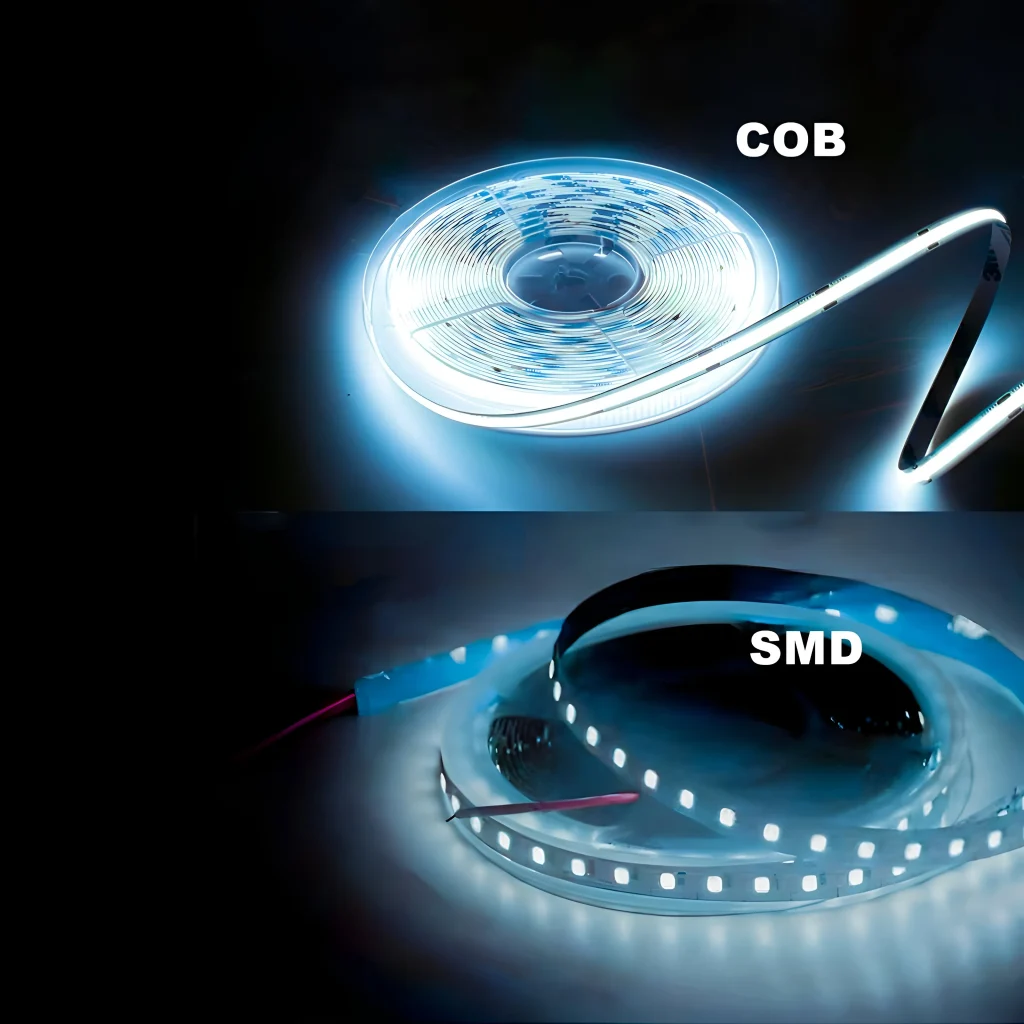
Application Guide: Choosing COB or SMD?
As we've seen, neither technology is universally "better." The optimal choice is always a trade-off based on the specific priorities of your project.
Scenarios for Choosing COB
You should lean towards COB when your project meets one or more of these criteria:
- When Visual Uniformity is a Priority: If the light source itself will be visible and you demand a completely seamless, dot-free line of light, COB is the only choice.
- When Lighting Reflective Surfaces: To avoid the "string of pearls" reflection effect on glossy countertops, polished floors, or glass surfaces.
- When High Flexibility is Needed: For installations that require wrapping around tight curves or complex architectural details.
Scenarios for Choosing SMD
You should lean towards SMD when your project aligns with these priorities:
- When Maximizing Brightness & Efficacy is the Goal: For applications like general illumination from a deep, hidden ceiling cove where raw power is the primary objective.
- When Budget is a Key Constraint: For large-scale projects, the mature manufacturing processes of SMD technology often make it a more cost-effective option.
- When Using Specialized Addressable LEDs: For creating dynamic, color-chasing "pixel" effects, as this technology is far more established and varied in the SMD format.
Conclusion
Ultimately, the decision in the COB vs. SMD comparison is a classic technical trade-off. It is a calculated balance between the impeccable visual smoothness and superior flexibility of COB on one hand, and the high-efficacy potential and proven cost-effectiveness of SMD on the other. A thorough understanding of these key differences allows designers, installers, and end-users to move beyond the marketing and select the ideal technology that aligns perfectly with their project's unique goals, budget, and desired lighting outcome.
Frequently Asked Questions (Q&A)
Q1. Since COB strips are dot-free, do I still need an aluminum profile for them?
A:Yes, it is highly recommended. While a profile is not needed for light diffusion with COB, its primary role is heat dissipation. The aluminum channel acts as a heat sink, drawing heat away from the strip to ensure its rated lifespan and performance. It also provides crucial physical protection.
Q2. Which technology is better for RGB color-changing effects?
A:For standard, uniform color-changing (where the whole strip is one color at a time), both technologies work well. However, for dynamic, color-chasing "pixel" effects, SMD is the superior choice. The technology for individually addressable chips is far more mature, varied, and widely available in the SMD format.
Q3. Is there a difference in how you cut and reconnect the strips?
A:While the basic principle is the same (cutting on designated lines), there are practical differences. SMD strips have larger, clearly marked solder pads that are generally easier to solder. COB strips have much smaller and denser cut points, which require more precision. Solderless connectors are also specific to each type, so you must use the correct one.


